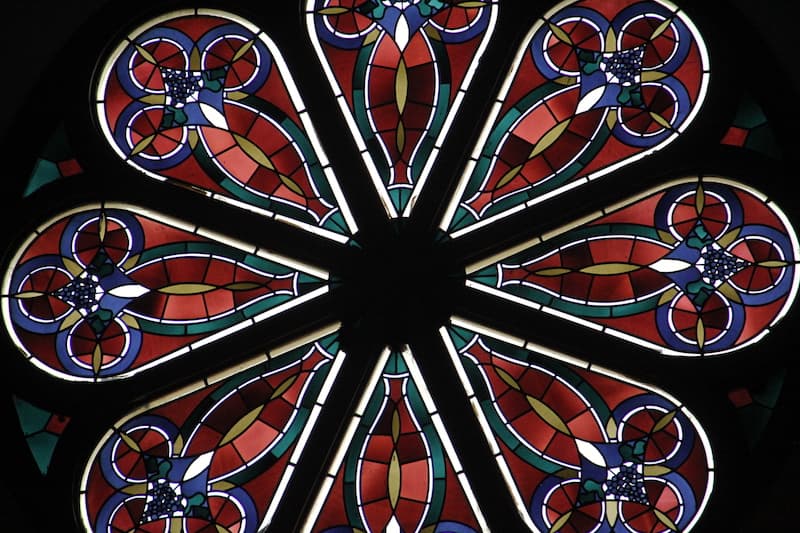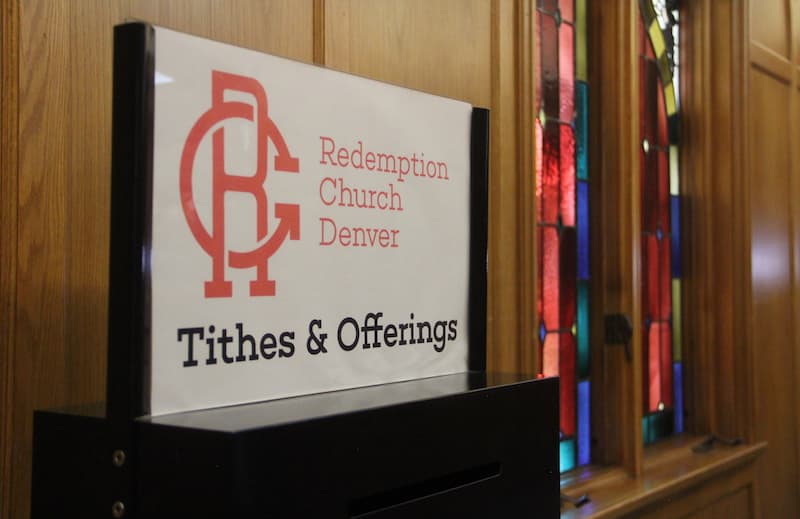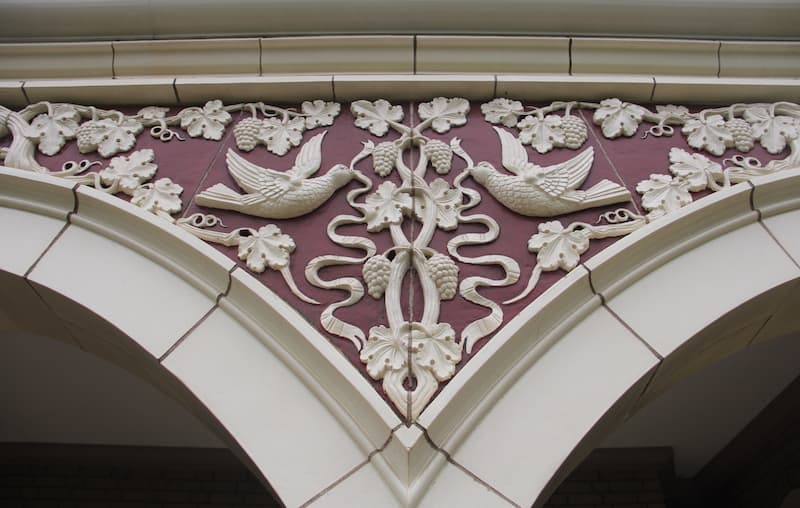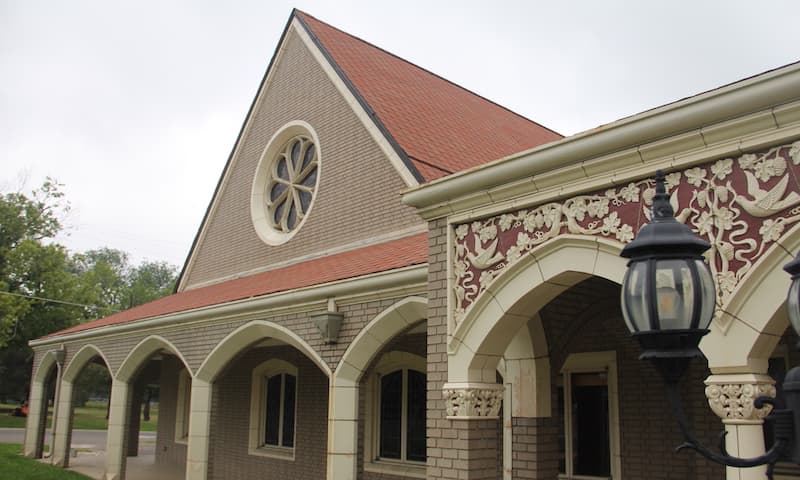UPDATE: On Monday, July 27, the Denver City Council voted to designate the Howard Berkeley Park Chapel a historic landmark.
The move essentially preserves the structure at 46th Avenue and Tennyson Street for as long as Denver is around.
Legislators voted 10 to 0 in favor of the landmark designation, with council members Debbie Ortega and Jolon Clark absent. Councilwoman Robin Kniech was present but was unable to vote because of technical problems during the online meeting.
Councilwoman Amanda Sandoval got the call two days after cruising to a runoff victory for her northwest Denver seat last June.
Sandoval was still more than a month away from being sworn-in, yet the councilwoman-elect was already being drawn into a brewing neighborhood conflict. It started in spring 2019 after owners of The Olinger Moore Howard Chapel, a recently shuttered mortuary, submitted a request to demolish it. But the demolition was opposed by a local historic group.
Tense meetings, a city council committee okaying a landmark preservation application (but only because members knew a potential compromise was in the works), the sale of the building and a totally new landmark application submitted this year that could help the mortuary stay in place for good followed.
Krista Copeland, current administrator at Redemption Church Denver, which now holds services at the mortuary, used to work as an architect for the National Park Service. Standing inside the mortuary's chapel, she called the thought of a wrecking ball coming down on the building "horrendous."
"I worked at President Grant's home, President Lincoln's home, Old Faithful Inn," Copeland said. "I got to work on these amazing structures all over the country. And this is equally valuable as any of those structures that we worked on."

The demolition applications triggers a process, the first step of which determines whether the building has historic or landmark value. The city's Landmark Preservation office, which is under the planning department, is responsible for this assessment. If the office determines a structure could be a city landmark, it will issue a public notice and notify local RNOs and city council members.
The mortuary, located at 4345 West 46th Ave., was built in 1960. It sits at the northeast corner of Tennyson Street and 46th Avenue, across Berkeley Lake Park. According to its landmark application, the imposing structure -- which the Denver Post called both functional and artistic when it opened -- was designed by famed local architect J. Roger Musick and featured Tudor and Gothic Revival elements. It was built by the Howard Mortuary Company following the city's post-World-War II population boom between 1940 and 1970. Mortuary president Robert J. Howard, Sr., noted at the time that it was meant to serve an under-served area that just kept growing. Musick would go on to call it one of his five principal works during that era.
In an effort to save the building, Historic Berkeley Regis filed an application to the city for a landmark application, citing certain criteria the group felt the building met for preservation. These applications can be submitted by building owners or the public.
But the owners at the time, SCI Colorado Funeral Services, disagreed with the group. Part of it was business: SCI was under contract with Koelbel & Co. to sell the property. Koelbel wanted to raze the mortuary to build 58 townhomes on the plot.
Both sides made their case during an August 2019 Landmark Preservation Commission meeting. The commission recommended preservation, agreeing the structure met the threshold for landmark designation.
After successful negotiations that started in November 2019, the building was sold in February. A new landmark application was submitted this year.
Historic Berkeley Regis member Tom Simmons said the group's mission is to identify and celebrate local buildings for potential reuse. Time wasn't really on their side as they argued to help preserve a building Simmons said was a "familiar, orienting landmark" in the neighborhood. He helped put together this year's landmark application.

"To everyone's surprise, we were able to find a buyer," Simmons said. "Everyone told us there was not enough time to do this."
The property sold for $4.5 million in February, and its new owners, GM Development, is on board with preservation. Co-owner Ben Gearhart said the negotiations last year involved figuring out terms like ensuring an application for landmark status. Gearhart is a Berkeley resident.
"We've had a good relationship with the neighborhood association, the city council," Gearhart said. "This just seemed like a natural fit for us."
During last year's commission meeting, opponents for preservation argued redeveloping the building for another use would be difficult.
Gearhart said it was a challenge, but the building and plot are already serving multiple purposes. It houses the Redemption Church Denver, which started services in March, and Gearhart said they're working on bringing in a Montessori school. The building's parking lot is hosting a summer series that includes pop-up concert screenings; last month it hosted a screening for a streamed Garth Brooks concert. The building will also be turned into an event space for weddings, holding up to 170 people.
Copeland said the congregation wanted to find another neighborhood site after their building was sold. Copeland said they narrowed down their choices to five areas before settling on Berkeley. They moved into the space on March 1, holding one service before closing due to the pandemic. They hosted live-streamed services before recently reopening, allowing up to 50 people.
The landmark designation request is a bit different than the one first that was submitted.
The boundaries have shrunk, with only the mortuary (not its parking lot) in the application.
Principal city planner Kara Hahn pointed out during the Land Use, Transportation and Infrastructure Committee meeting on June 30 that the application is one of the first to be considered under new criteria for landmarks.

Those new rules were being developed as the mortuary went through its first landmark application process. Hahn said the new rules went into effect on Nov. 1., but she noted that they didn't impact the mortuary's application. The new rules include adding cultural significance options to better connect with the city's growing diversity and adds the option for more time so parties involved in the application can meet.
There are 10 criteria, and among other eligibility requirements, a structure needs to meet at least three of them for a structure to be eligible for a landmark designation. The mortuary's application listed five, including having a direct association with the city's development and being a significant example of a recognized architect in Musick.
The new landmark application was approved by the City Council's Land Use, Transportation and Infrastructure Committee on June 30.
Councilwoman Sandoval was listed as the primary applicant. She said the outcome created "a win-win for all of us in northwest Denver."
Sandoval said the application will now get a public hearing before the full City Council on July 27.

"It was a collaborate event," Sandoval said during the June 30 meeting. "It was a group of north Denver residents who wanted to see this persevered."
After moving in, the church's congregates cleaned the building's original tiles and chandeliers and painted the chapel's ceiling. Copeland particularly appreciated the red oak paneling on the walls.
"It's just a beautiful space," Copeland said. "I'm glad that Ben and Charles were able to save it, and Historic Berkley Regis, and the community, because we're the lucky benefactors that get to be here for service every week."












